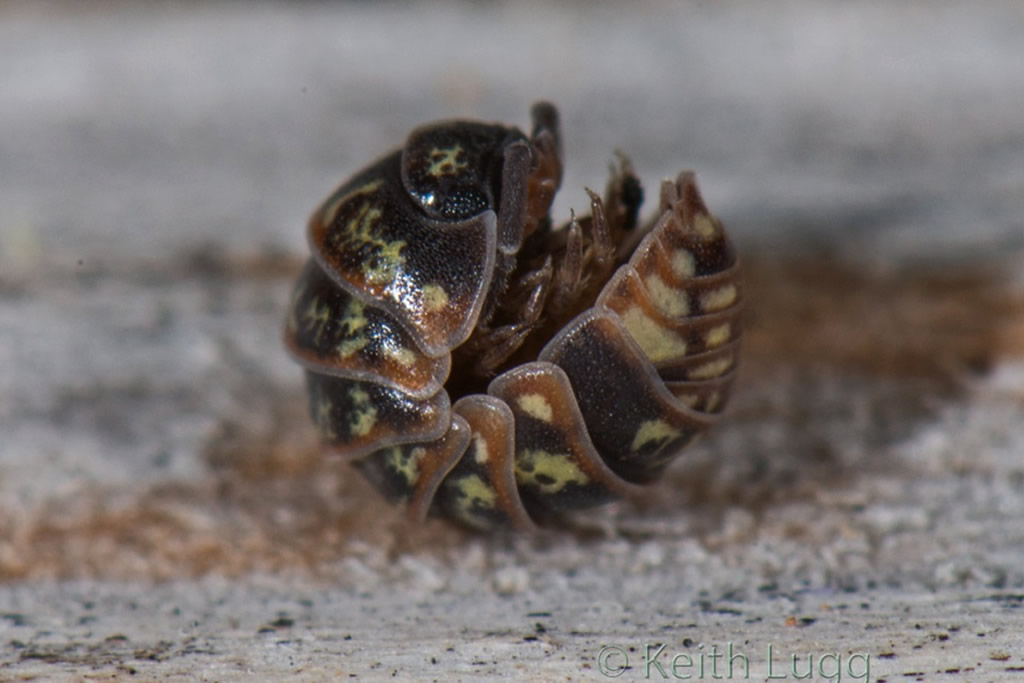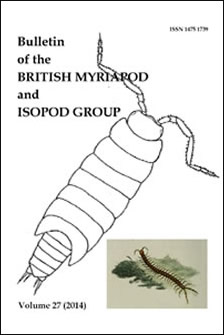Review of the conservation status of centipedes, millipedes and woodlice
An up to date review of the conservation status of centipedes, millipedes and woodlice has been published by Natural England.
--------------------
BMIG Newsletter 31 (Autumn 2015)
Contents: Editorial; Annual Field Meeting and AGM 2016; Linlithgow field meeting 2015; Some highlights from Royal Botanic Garden Edinburgh; 50 years of the Biological Records Centre; Bioblitz in South Devon; Crapedosoma rawlinsii in Cornwall and a further record of Haplophilus souletinus; Haplopodoiulus spathifer in Birmingham; More on north-eastern Landhoppers Arcitalitrus dorrieni; Article reviews.
Annual Field Meeting 2016
Annual Field Meeting and AGM
Juniper Hall Field Studies Centre, Dorking, Surrey
The identity and origins of the British Trachysphaera lobata populations
 A paper has been published in the Biodiversity Data Journal (doi: 10.3897/BDJ.3.e5176) looking at the identity and origins of the British populations of the Dwarf Pill Millipede, Trachysphaera cf. lobata.
A paper has been published in the Biodiversity Data Journal (doi: 10.3897/BDJ.3.e5176) looking at the identity and origins of the British populations of the Dwarf Pill Millipede, Trachysphaera cf. lobata.
Millipedes new to science
Three new genera of Craspedosomatid millipede (out of seven found) and nine new species (out of ten found) were collected during David Bilton' s and BMIG's excursions to Galicia, NW Spain, in 1993 and 2004 respectively.
The new species include Galicisoma n.g. desmondkimei n.sp.; Galicisoma n.g. biltoni n.sp. and Turdulisoma helenreadae n.sp., which are named in honour of some of those prolific BMIG members who participated.
--------------------
BMIG needs you!
The committee have identified the Officer roles they think necessary to the future direction of BMIG. Many of these roles do not require expertise in or indeed any knowledge of myriapod and isopod ecology and identification (although by definition members are assumed to have an interest) and many of the skills they require are not well represented amongst the current committee. Take a look at the roles below and if you think you might be interested in one of these roles please do not hesitate to put yourself forward even if someone is already filling it.
--------------------
BMIG Newsletter 30 (Spring 2015)
Contents: Editorial; Spring field meeting in Linlithgow; AGM proposals; Look out for ectoparasitic fungi on millipedes; Trachelipus rathkei found in Yorkshire; A call for help in resolving the phylogeny of the pill-millipedes; A fourth site for Haplopodoiulus spathifer; Social myriapod – the BMIG Facebook page; Biogeographic and taxonomic catalogue of the centipedes of France; Millipede population explosions; In the journals.


